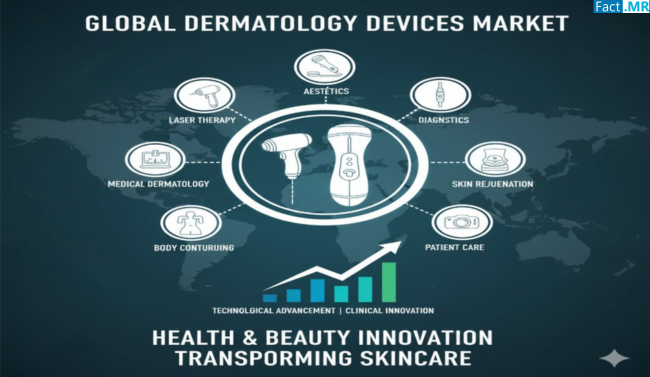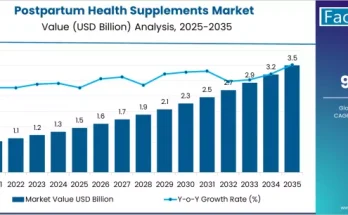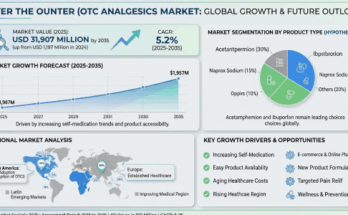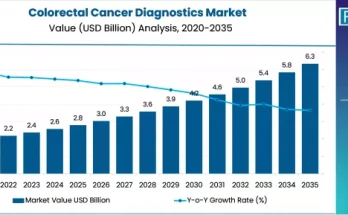The dermatology devices market is experiencing rapid growth as technological innovations transform skin care, diagnosis, and treatment. From non-invasive cosmetic procedures to advanced medical therapies for skin disorders, dermatology devices are redefining patient care. With increasing awareness of skin health, rising prevalence of dermatological conditions, and the growing demand for minimally invasive treatments, the adoption of these devices continues to accelerate.
Healthcare providers, aesthetic clinics, and hospitals are increasingly prioritizing advanced dermatology solutions to enhance treatment outcomes, reduce recovery time, and improve patient satisfaction. The evolving landscape of dermatology devices reflects a broader trend toward personalized, technology-driven healthcare solutions.
Market Overview
Dermatology devices include a wide range of instruments and technologies used for both therapeutic and cosmetic purposes. These devices help in diagnosing, monitoring, and treating skin conditions such as acne, psoriasis, eczema, skin cancers, and cosmetic imperfections like scars, wrinkles, and hyperpigmentation.
The market is driven by innovations in laser therapy, phototherapy, radiofrequency treatments, cryotherapy, and ultrasound-based solutions. Non-invasive and minimally invasive devices are gaining traction as they offer safer and faster alternatives to traditional surgical methods. Additionally, integration with imaging technologies and digital platforms enables dermatologists to deliver precise, personalized treatments.
Growing investments in research and development, along with increasing demand for aesthetic procedures, are driving the expansion of the dermatology devices market. Continuous innovation in materials, device efficiency, and patient comfort is shaping the future of skin care and treatment.
Regional Insights
North America is a key market for dermatology devices, supported by advanced healthcare infrastructure, high awareness of cosmetic treatments, and strong adoption of cutting-edge technologies. The region is home to several leading medical device manufacturers and aesthetic clinics, driving the adoption of innovative dermatology solutions.
Europe follows closely, with favorable healthcare policies, rising demand for non-invasive cosmetic procedures, and increasing clinical research in dermatology. Countries like Germany, France, and the U.K. are witnessing significant integration of laser and phototherapy devices in dermatological care.
Asia-Pacific is emerging as a high-growth region, fueled by increasing disposable incomes, rising awareness of skin health, and rapid urbanization. Markets in countries such as Japan, South Korea, China, and India are adopting advanced dermatology devices both for medical treatments and cosmetic applications. The expansion of medical tourism in the region is further boosting demand for state-of-the-art dermatology solutions.
Key Trends & Forecast
Several trends are shaping the dermatology devices market:
- Non-Invasive and Minimally Invasive Technologies: Devices that provide effective results with minimal discomfort and downtime are gaining popularity among patients and clinicians.
- Integration of Imaging and Diagnostic Tools: Advanced imaging, AI, and digital monitoring are enabling accurate diagnosis, personalized treatment planning, and real-time assessment of therapeutic outcomes.
- Rise in Cosmetic Procedures: Growing demand for anti-aging treatments, skin rejuvenation, and aesthetic procedures is driving adoption of laser, ultrasound, and radiofrequency devices.
- Innovation in Treatment Modalities: Continuous R&D is introducing new therapies for chronic dermatological conditions, including targeted light therapies and bioelectronic treatments.
- Collaborations and Strategic Partnerships: Manufacturers are partnering with research institutions, hospitals, and aesthetic clinics to accelerate product development and clinical adoption.
These trends indicate that dermatology devices are increasingly moving toward precision, safety, and patient-centered care.
Applications & End-Use Outlook
Dermatology devices are widely used across medical and cosmetic fields:
- Medical Dermatology: Devices are applied for treating chronic skin conditions such as psoriasis, eczema, vitiligo, and skin cancers. Laser therapy, phototherapy, and cryotherapy offer effective non-invasive treatments for a variety of conditions.
- Cosmetic Dermatology: Anti-aging, skin tightening, scar reduction, hair removal, and pigmentation correction are driving the adoption of cosmetic dermatology devices.
- Hospitals and Clinics: Medical facilities and specialty dermatology clinics are major end users, focusing on integrating advanced devices to improve patient care.
- Aesthetic Centers and Spas: Rising consumer interest in aesthetic treatments is boosting the deployment of safe and efficient dermatology devices in cosmetic centers.
The increasing preference for outpatient and minimally invasive procedures is contributing to the wider adoption of dermatology devices globally.
Conclusion
The dermatology devices market is poised for significant growth as technological innovations redefine skin care and treatment. By offering precision, safety, and efficiency, these devices are improving patient outcomes and enhancing the overall quality of dermatological care.
With continued investment in R&D, integration of advanced diagnostic tools, and expansion into emerging markets, dermatology devices are set to become central to both medical and cosmetic skin care. As awareness of skin health grows and demand for minimally invasive solutions rises, the market will continue to evolve, delivering innovative, patient-centered solutions for a wide range of dermatological needs.



